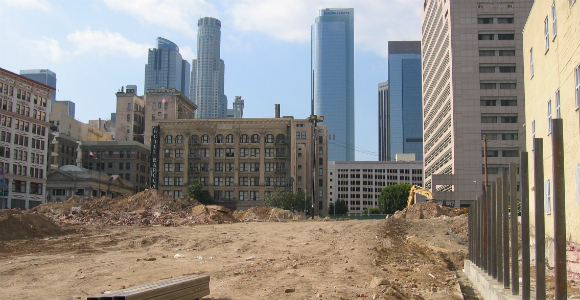
(Photo Credit: Michael Daines/Flickr)
More than half of Californians say the state is in for good times financially next year but also that the gap between have and have-nots in the state is very real, says a poll released this week. And there’s wide agreement that education–and educating in new ways–is one of the most important weapons in fighting the inequality problem.
“People are feeling it’s not a fair playing field,” said Antonia Hernandez of the California Community Foundation at Public Policy Institute of California’s “California – State of Change” event today. “We cannot be a thriving California, if the statistics are lopsided.”
When asked if the state will have good times financially next year, 52 percent said yes in PPIC’s monthly check-in on residents “Californians and the Future” which came out this week. But inequality is still a top concern, with a poll-record 68 percent of adults surveyed saying the state is divided into haves and have-nots.
Even as California has added the greatest number of jobs in the country in recent years, the narrative of two Californias has certainly become prominent in public square, contributing to those poll numbers. (See our video and Summit day-of story on the Tale of Two Californias).
“California has come back, but not all Californians have,” said Assembly Speaker Toni Atkins during her speech after being re-selected to her post. Others disagree with the comeback narrative but definitely agree with the inequality picture.
Brulte: we clearly have two Californias … And that’s a problem. To think we’re out if the woods is to not understand what’s happening
— Anthony York (@anthonyyork49) December 2, 2014
Joe Simitian, supervisor on the Santa Clara County Board of Supervisors, speaking at the State of Change event said his region is pleased to see their local success happening but is also concerned about the divide.
“They want to make sure, while seeing that success, there’s opportunity for people on the lowest rung…it become harder to climb the ladder to success as the rungs become farther and farther apart,” said Simitian.
Still, given its tech boom, the Bay Area not surprisingly has a more optimistic outlook on next year’s financial situation, with 68 percent of the region’s surveyed adults said good times will be had. Only 40 percent from the Inland Empire agreed.
That’s why it’s significant that the 2015 Economic Summit will make its way to the Inland Empire next year and will take place in Ontario on November 12-13.
Even as an important logistics and manufacturing hub, the “IE” felt effects of the Great Recession much more than the coastal regions, though things are improving. The Summit taking place there will be a strong reminder that California’s economy is made of a bunch of regional economies and successful economic development in one region isn’t always the best for all the others.
“We also have just two days to plant the word that our entire area is largely made up of working people, and most of us are still coping, in one form or another, with the worst economic downturn in the last 80 years,” said Paul Granillo, president and CEO of the Inland Empire Economic Partnership and co-chair of the Steering Committee of the California Economic Summit. “We have a much better view of the Great Recession than almost everyone in coastal California.”
While much heat and light has been generated by the UC tuition hike fight, something most people agreed on in the survey was that education is a key part of the state’s economic future. Seventy-six percent said the state’s public higher education system was “Very Important” to economic vitality over the next two decades.
“They are public institutions and therefore they have a publish mission,” said Simitian. “Part of the mission has to be that their graduates are ready for a 21st-century economy.”
The group of schools people usually include in that mission are the the four-year schools, like the UC’s and CSU’s, but also community colleges across the state are in the mix. Education advocates have been reminding that the community college network is a vital tool in closing the skills gap, especially for jobs that don’t require a four-year degree but still have a good salary.
Hernández countered the argument that those skilled, middle-class jobs just aren’t out there in the state, speaking at the PPIC event during the discussion about the economy.
“You still need to construct houses,” said Hernández. “You need to be a welder. What’s different about being welder 50 years ago and today is you have to know technology, because you’re doing welding with technology. We need manufacturing jobs. It’s not all there but all of this is based on a level of education that allows you to participate.”
The concern over the skills gap also made its way into the poll, with a plurality of those Californians surveyed by PPIC (47 percent) saying the state won’t have enough college-educated workers to meet the demands of the economy over the next 20 years, if trends go the way they are going.
Estimates show the state may have a 1-million-worker deficit of college graduates in the next 10 years and a 1.5-million deficit of workers with “some college.” Community colleges will be an important part of closing those gaps, as they’re seen as regional workforce machines in every community across the state.
“The community colleges are the key and we have an infrastructure of community colleges,” said Hernández.
Even though most people surveyed said they don’t want to raise taxes to pay for improve higher education funding, which is the most prominent political puzzle in the news right now, there are opportunities to make higher ed more effective and responsive to workforce needs, such as the “workforce data dashboard” bill passed last session.
The Summit and its Action Team efforts will keep looking for more solutions and results like those to build that 21st-century workforce everyone wants. So, keep an eye on this space for more news.

